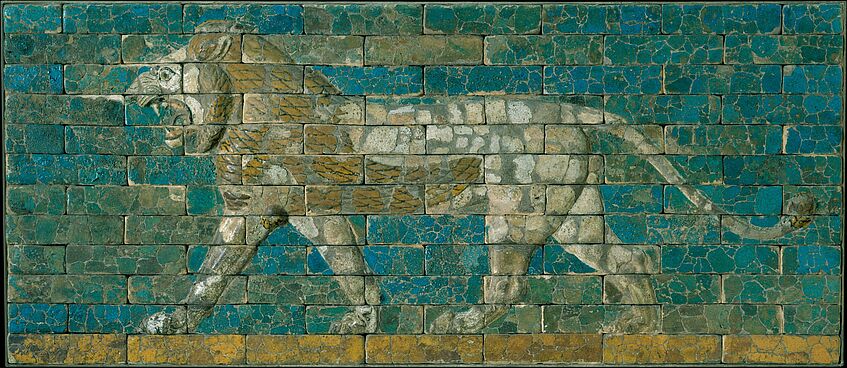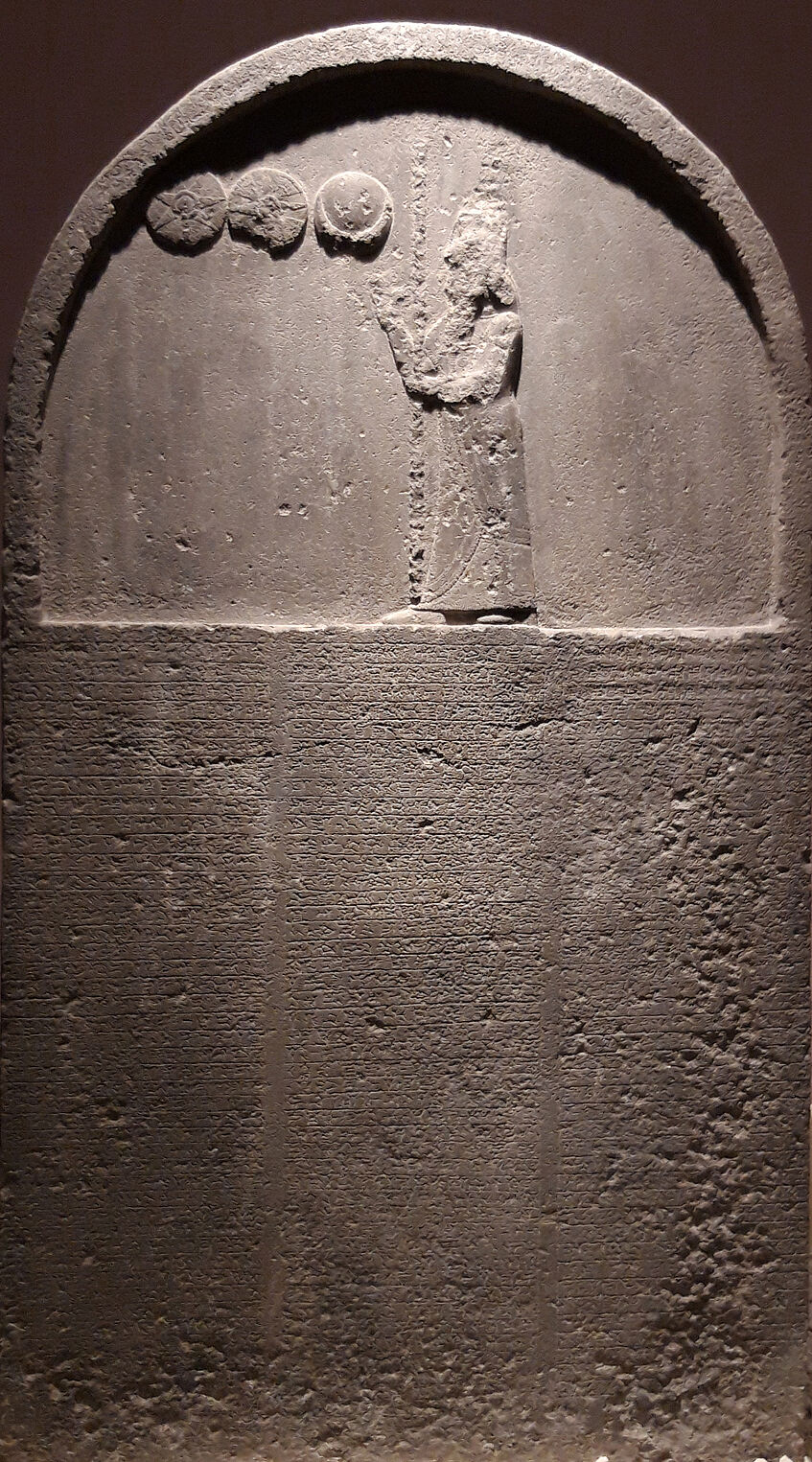History of Assyriological research at the Department of Near Eastern Studies
Origins
With the discoveries of the Assyrian palaces in the mid-19th century CE by the French and English, the major finds, especially the palace reliefs, were transported to the Louvre and the British Museum and put on display. These finds aroused significant interest in the ancient Near East not only in the general public but also in professional academic circles. The depictions on the reliefs and the growing number of cuneiform texts emerging from the ground were initially studied for the purpose of elucidating biblical texts, but soon also sparked discussions about their own origins and contexts. At that time, however, only a few such objects came to Austria and England, France and Germany, which purchased objects, remained the leaders in this field of research. Nevertheless, the Oriental Institute in Vienna, founded in 1886, taught not only languages such as Arabic, Turkish, Sanskrit, but also ancient Egyptian, Sabatean and Assyrian-Babylonian (Akkadian). In 1887, the Wiener Zeitschrift für die Kunde des Morgenlandes (“Viennese Journal for Studies on the Near East”) was founded, which continues to this day to publish numerous articles about the ancient Near East.

Panel with striding lion, Processional Way at Babylon, 604–562 B.C., Metropolitan Museum New York, inv.no. 31.13.1 @ public domain: www.metmuseum.org/art/collection/search/322585
From the end of the 19th century to World War II

Stela of Nabonid, king of Babylon (556–539 BC), Ṣanlı Urfa Müzesi @ Stephan Procházka
Between the years 1885–1912, David Heinrich Müller (1864–1912) taught not only Assyrian-Babylonian, but also Hebrew, Aramaic, and Ethiopian, although his main focus was Arabic and his field of research was Southern Arabia. His work was generally of little importance for research into the cuneiform script, but, in 1904, one year after its discovery, he translated the Code of Hammurapi into Biblical Hebrew in order to understand its relationship to the laws in the Torah.
His successor, Rudolf Geyer (1861–1929), was also primarily engaged with Arabic studies, and he devoted his research to Old Arabic poetry and its historical context. His student Friedrich Hrozný (1879–1952) directed his interest towards Assyrian, Sumerian, Aramaic, Ethiopian and Sanskrit. After receiving his doctorate, he continued his education under Friedrich Delitzsch, the leading Assyriologist of the time, in Berlin. From 1905 onwards, he was a Privatdozent in Vienna and went on research trips to copy cuneiform texts. In 1914, after the death of the Assyriologist Hugo Winkler, who was the epigrapher for the excavations in Ḫattuša/Ḫattuša, Turkey, Hrozný was sent there to work on the texts. These texts were written in Babylonian cuneiform but in Hittite, which was still unknown at the time. Only one year later, in 1915, Hrozný announced that he had deciphered the Hittite language and assigned it to the Indo-European language family. In 1919, he was appointed Professor of Cuneiform Writing and Ancient Near Eastern History ("Professor für Keilschrift und altorientalische Geschichte”) at the University of Prague. Another Viennese scholar is Georg Hüsing (1869–1930), who completed his habilitation (post-doctoral qualification) in 1912 in Vienna in the subject “History of the Ancient Near East” ("Geschichte des Alten Orients”), where he worked as an “außerordentlicher Professor“ (a permanent position similar to a full professor) starting in 1921. His focus was on the languages of Elam and Urarṭu.
Geyer's successor in 1924 was his student Viktor Christian (1885–1963), who studied in Vienna with David Heinrich Müller and Friedrich Hrozný, among others. After receiving his doctorate in 1910, he continued his studies at the University of Berlin with the philologists Friedrich Delitzsch and Hugo Winkler, as well as with the anthropologist and excavator Felix von Luschan. Afterwards, he joined the Department of Anthropology and Ethnography of the Natural History Museum in Vienna, becoming head of the department in 1919. In 1923 he obtained the venia legendi for “Semitic Languages with a Specialization in Cuneiform Script” ("Semitisch mit besonderer Berücksichtigung der Keilschriften”). Christian had a broad interest in philology, archaeology and ethnology and published in all fields. However, his pronounced National Socialist views, which had earlier resulted in the advancement of his career in the university, prevented him from continuing to work in academia after the war. In 1938, he was responsible for the dismissal of his assistant A. Leo Oppenheim (1904–1974), who was Jewish. Oppenheim had completed his doctorate in Vienna in 1933 under Christian. Oppenheim found a new home in the Oriental Institute at the University of Chicago, where he was appointed professor in 1954 and was the responsible editor of the "Assyrian Dictionary of the University of Chicago" from 1955–1973. Another scholar of this period was Friedrich Wilhelm König (1897–1972), who completed his habilitation in Vienna in 1931 in the subject “History of the Ancient Near East” ("Geschichte des Alten Vorderasiens”). He worked for the Austrian National Library, became honorary professor in 1948, and was engaged in the edition of royal Elamite and Urarṭian inscriptions.
After World War II
From 1949 to 1953, Fritz Rudolf Kraus (1910–1991) represented Assyriology in Vienna. He had studied Semitic and Near Eastern languages in Munich and Leipzig and was awarded his doctorate in 1935 in Leipzig under Benno Landsberger. Because his father was Jewish, Kraus emigrated to Istanbul during the war, where his teacher Landsberger had already found refuge. There Kraus was able to work at the Archaeological Museum and the University. In 1949, he became associate professor for Ancient Semitic Philology and Near Eastern Archaeology ("Altsemitische Philologie und Orientalische Archäologie") at the University of Vienna, leaving in 1953 for the University of Leiden, where he taught until 1980.

Terracotta figurine, Syria, 1st half of 2nd millennium @ Ellen Rehm
His successor after 1955 was Wolfram von Soden (1908–1996), who had received his doctorate in 1931 under Benno Landsberger, and had completed his habilitation in Göttingen in 1933 in the subject Near Eastern Languages, especially Assyriology ("Orientalische Sprachen, insbesondere Assyriologie"). Due to his National Socialist past, he did not have a permanent position after the war, but his Grundriss der akkadischen Grammatik (Outline of Akkadian Grammar), published in 1952, is still in use today, as is his Akkadisches Handwörterbuch (Akkadian Dictionary), originally founded by Bruno Meissner and begun in 1952. Von Soden moved to the University of Münster in 1961.
He was succeeded by Hans Hirsch (1931–2020) from 1963 to 1998, whose research focus was on Akkadian grammar and on the religious and literary history of Ancient Near Eastern Studies. In 1976, he took over the journal Archiv für Keilschriftforschung (“Archive for Cuneiform Studies”), founded in 1923 by Ernst Weidner (1891–1976) from Graz, which was renamed Archiv für Orientforschung (“Archive for Near Eastern Research”) in 1926. This internationally- and highly-recognized journal is characterized by a comprehensive bibliography with keywords of Assyriological literature (see https://orientalistik.univie.ac.at/zeitschriften/afo/).
Since 1963, Assyriology has been supported by a position in Near Eastern Archaeology, which Erika Bleibtreu held until her retirement in 2007. Her research is particularly focused on Assyrian art.
From 1998 to 2015, the Sumerologist Gebhard J. Selz held the professorship for Ancient Semitic Philology and Near Eastern Archaeology ("Altsemitische Philologie und Orientalische Archäologie"). His work is concerned with the ancient Near Eastern intellectual world.
Von Soden's student Hermann Hunger (Ph.D. in Münster 1966) was associate professor from 1978 to 2007 after working in Vienna and at the Oriental Institute of the University of Chicago. He is one of the leading scholars in ancient Near Eastern astronomy and the history of science.
Since 2008, Michael Jursa is professor of Assyriology. He received his doctorate in Vienna in 1991 and completed his habilitation in 2000. His research focus is on the economic and social history of Mesopotamia, especially in the 1st millennium BCE. In 2019, Nicla De Zorzi (PhD 2011 Università Ca' Foscari di Venezia) became a tenure-track professor of Ancient Near Eastern Studies. Her research focus is the study of the "learned" literature of ancient Mesopotamia, especially from the 1st millennium BCE.
Further reading: Hermann Hunger, Geschichte der Altorientalistik in Wien, in: F. Schipper (Hg.), Zwischen Euphrat und Tigris, Österreichische Forschungen zum Alten Orient, Wiener Offene Orientalistik 3, Wien 2004, 19–22.
